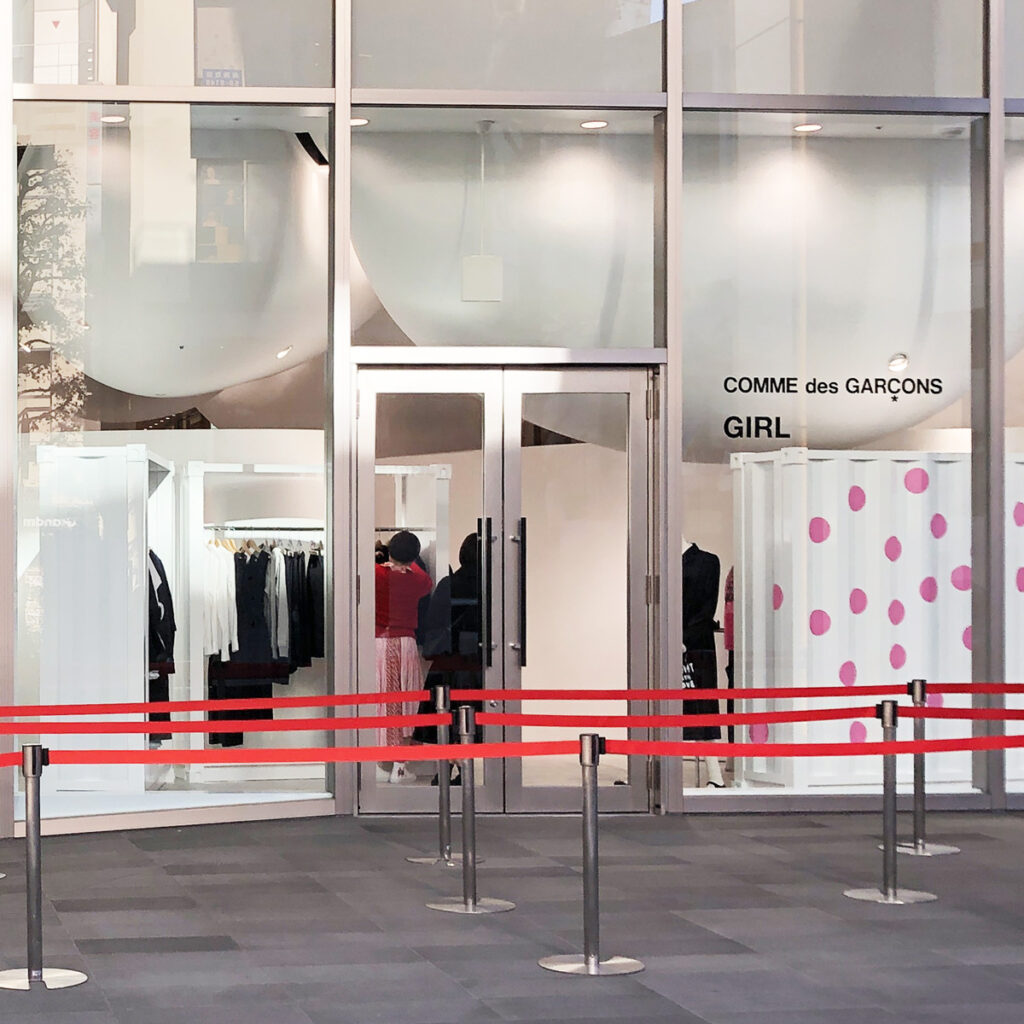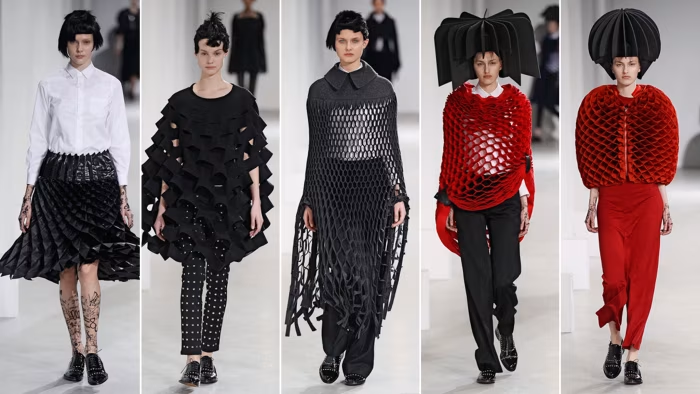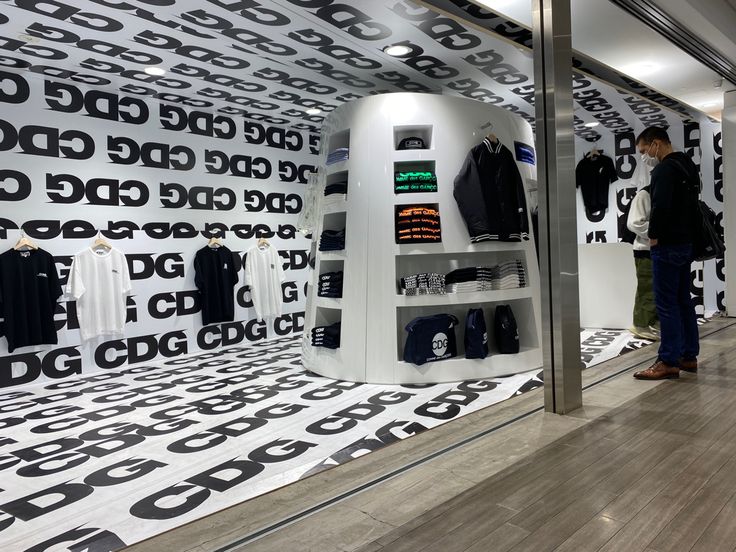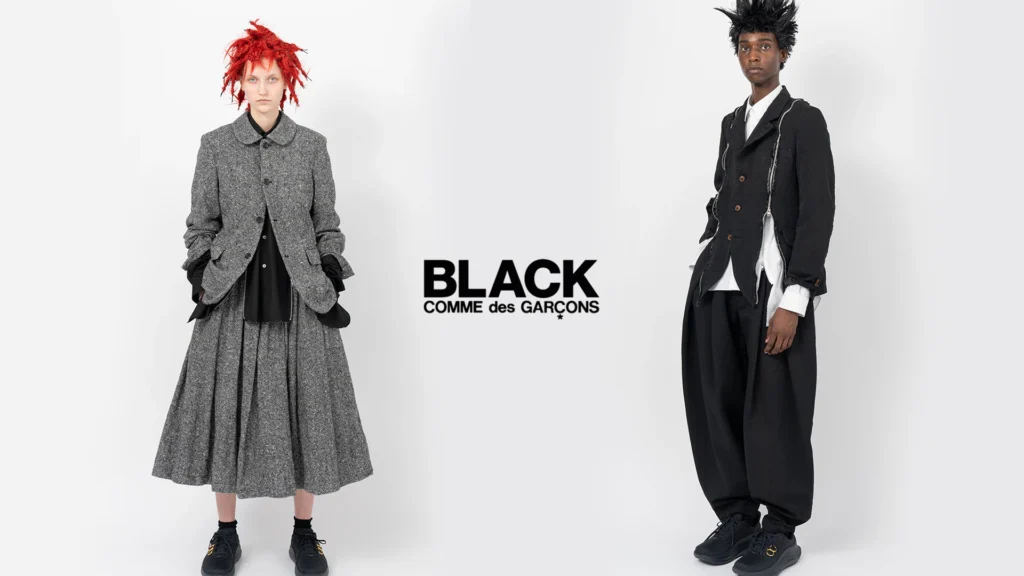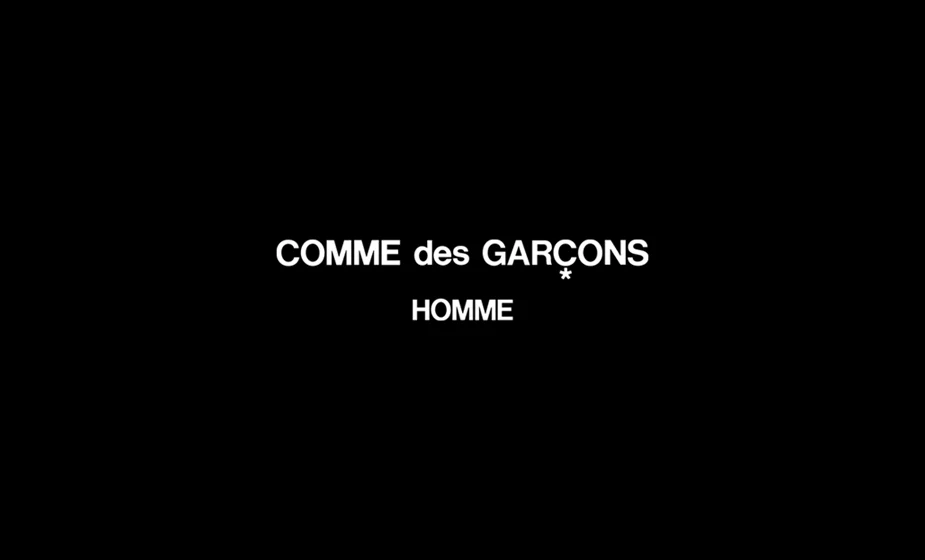✨ The Silence That Started It All
In a world obsessed with spectacle, Rei Kawakubo built an empire on silence.
No slogans. No marketing. No logo mania.
Just ideas, stitched into asymmetry and shadow.
When she founded Comme des Garcons in 1969 Tokyo, she wasn’t designing clothes — she was designing concepts.
Ideas about what it means to be human, to be imperfect, to be seen and unseen.
“Fashion is not about perfection,” Rei once said. “It’s about emotion.”
That emotion would one day find its way across the Pacific, landing on American soil like a quiet storm that never left.
🕊️ America Meets Rei Kawakubo
When Comme des Garcons first appeared in the United States during the 1980s, it was not love at first sight.
Americans didn’t quite know what to make of her distorted silhouettes, torn fabrics, and colorless palettes.
Was it beautiful? Was it tragic? Was it even wearable?
The fashion world debated — but the artists understood.
New York’s avant-garde saw in Rei’s work the same energy that built their own city: rawness, intellect, rebellion.
So while luxury brands shouted for attention on Madison Avenue, Rei whispered softly from downtown SoHo — and those who listened, never stopped listening.
🖤 The Philosophy of the Unfashionable
To understand Comme des Garcons, you have to abandon the idea that fashion is supposed to be “pretty.”
Rei Kawakubo’s world rejects prettiness entirely.
Her work celebrates:
- holes instead of patterns,
- voids instead of shapes,
- emotion instead of approval.
In America — where commercial beauty often reigns — Rei’s aesthetic felt like rebellion wrapped in black.
She showed the U.S. that imperfection could be divine.
🏙️ New York: The Brand’s American Soul
If Tokyo was the birthplace and Paris the proving ground, then New York became Comme des Garcons’ heartbeat.
When the SoHo store opened, it didn’t look like a store at all.
No ornate décor. No mirrors. No glamour.
Just white light. Metal racks. Empty space.
It felt closer to an art gallery than a boutique — and that was the point.
In Rei’s world, fashion isn’t consumed; it’s contemplated.
Artists, photographers, and stylists treated the store like a sacred studio — a quiet escape from the chaos of New York streets.
❤️ The Heart That Softened the Edge: PLAY
Then, in 2002, something unexpected happened.
Out of the avant-garde darkness, a small red heart appeared — sketched by Polish artist Filip Pagowski.
Comme des Garcons PLAY was born: a diffusion line that translated Rei’s conceptual DNA into something more approachable — striped shirts, cotton knits, clean sneakers.
It was simple. Playful. Universal.
And in America, it exploded.
The heart with eyes became a symbol not of trend, but of taste.
It was intellect disguised as casualwear — worn by Brooklyn kids, Hollywood icons, and Silicon Valley minimalists alike.
🧠 The American Conversation
What made Comme des Garcons succeed in the U.S. wasn’t strategy — it was spirit.
America, for all its noise and speed, has always admired outsiders.
Rei Kawakubo became one of its most respected outsiders by doing the one thing most designers feared:
She refused to explain herself.
Every collection arrived like a riddle.
Every runway felt like a film with no subtitles.
But that mystery drew America in — a country built on reinvention recognized a kindred soul in Rei’s quiet defiance.
🎨 Dover Street Market: The New Cathedral of Creativity
When Dover Street Market New York opened in 2013, it wasn’t just a retail space — it was a manifesto.
Conceived by Rei herself, DSM blended fashion, art, architecture, and emotion into one evolving environment.
It changed the way Americans thought about shopping.
Inside, each designer’s space looked like a miniature world — constantly transforming, always imperfect, always new.
“It’s chaos, but beautiful chaos,” Rei said about DSM.
Visitors didn’t just buy clothes; they experienced them.
They photographed, lingered, absorbed.
It was conceptual commerce — and it worked.
💫 Street Culture Meets Philosophy
For decades, streetwear in America was about energy, identity, rebellion.
When Comme des Garcons entered that space, it didn’t adapt to street culture — it expanded it.
Collaborations with Supreme, Nike, and Converse didn’t dilute Rei’s vision.
They translated it into a new language — one young Americans already spoke.
Each collab was a meeting point between intellect and impulse:
- 🖤 Comme x Supreme: philosophy meets youth.
- ⚡ Comme x Nike: movement meets meaning.
- ❤️ Comme x Converse: minimalism meets memory.
Through these, Rei reached an entirely new generation — without ever changing who she was.
🌙 The Designers She Inspired
Rei Kawakubo’s impact on American fashion can’t be measured by sales.
It’s measured by attitude.
Her influence pulses through:
- Rick Owens’ sculptural austerity,
- The Row’s quiet precision,
- Fear of God’s architectural minimalism,
- Eckhaus Latta’s androgynous fluidity.
Every designer who values thought over trend owes something to Rei.
💭 The Genderless Revolution
Long before “genderless fashion” became a movement, Rei Kawakubo had already erased those lines.
Her designs never asked “for whom” they were made — only why.
To her, clothing was a tool for self-expression, not identity limitation.
In America — a place still learning to unlearn binaries — Rei’s philosophy offered liberation.
It told people:
“You are allowed to exist between categories.”
And in that space, modern American fashion was reborn.
🕰️ The Timeless Rebellion
Unlike many brands, Comme des Garcons never chased trends.
It created timeless tension — always challenging, never predictable.
In an industry built on seasons, Rei’s work feels seasonless.
In a market built on popularity, her collections remain personal.
That resistance became the ultimate luxury.
🪞 The Art of Imperfection
What Americans first saw as “unfinished” became a new kind of perfection.
Ripped seams, uneven hems, mismatched layers — they all carried meaning.
To Rei, fashion wasn’t about pleasing the eye.
It was about stirring the mind.
“The void is full,” she once said.
“You just need to know how to see it.”
🌎 A Global Brand, A Local Spirit
Today, Comme des Garcons is one of the most respected avant-garde houses in the world.
But in the United States, it’s something deeper.
It’s a mindset — the belief that you can be quiet and powerful, rebellious and refined, all at once.
Every American creative who values concept over convention carries a trace of Rei’s philosophy.
⚪ The Beauty of Restraint
Luxury today often means logos and excess.
But Comme des Garcons teaches a different truth:
Luxury is restraint.
It’s the empty space between stitches.
The quiet thought behind a garment.
The refusal to explain.
In that silence lies the brand’s power — and America’s fascination.
🖋️ Epilogue — The Art of Staying Unreadable
Half a century later, Comme des Garcons in the USA still refuses to fit into a category.
It’s not streetwear.
Not luxury.
Not even fashion, entirely.
It’s philosophy in fabric, still whispering to those who can hear it.
“I create out of nothing,” Rei said once.
“Because nothing is endless.”
From the runways of Paris to the sidewalks of New York, her work continues to shape what America wears —
and, more importantly, how America thinks.


